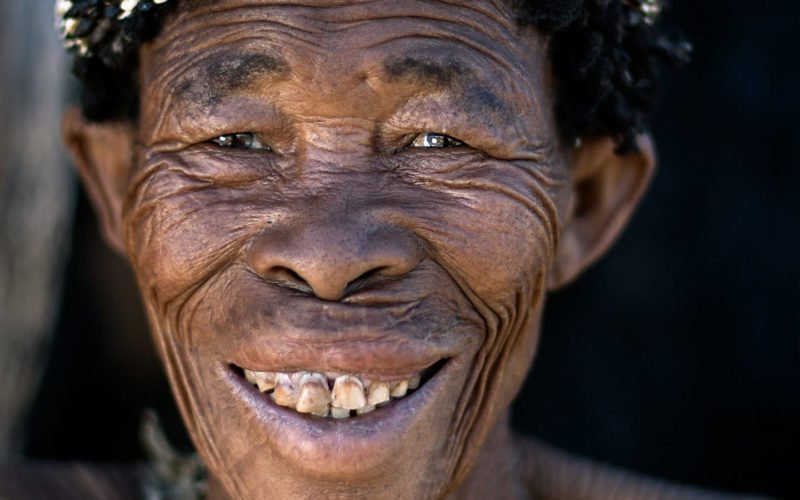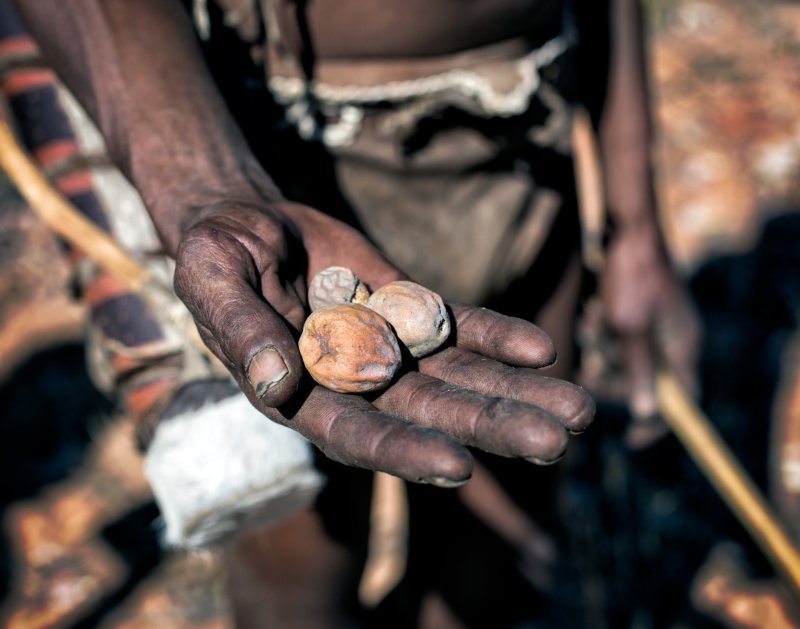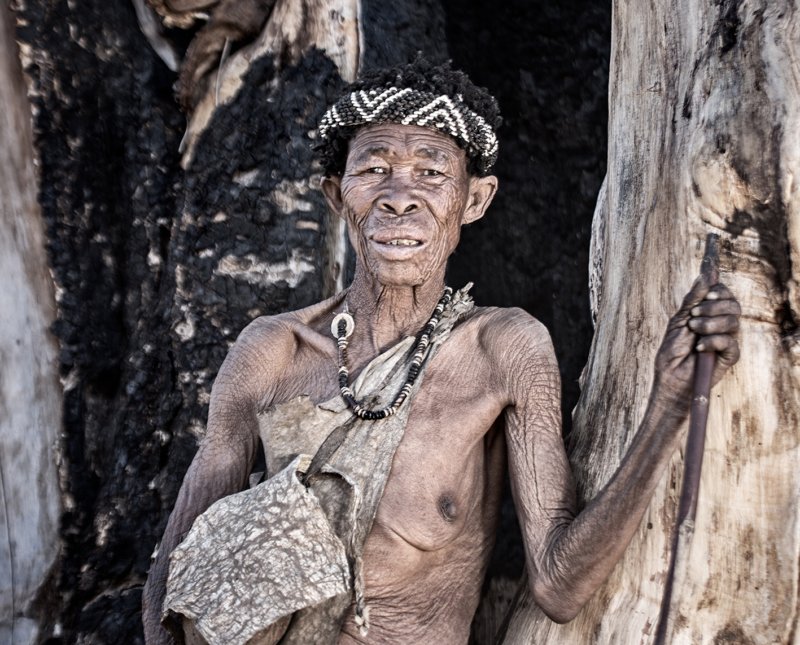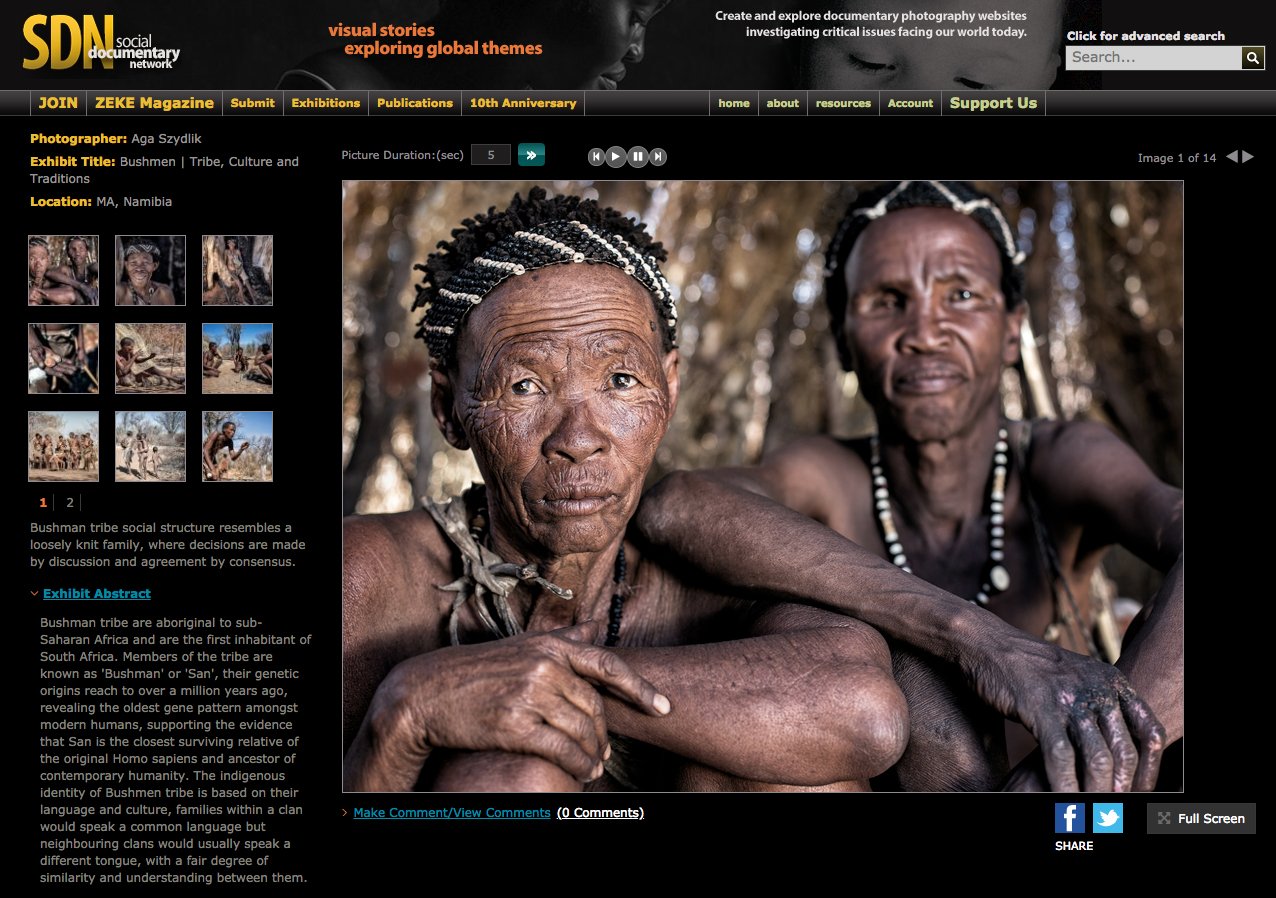Bushmen | Ancient people of Namibia
Bushmen tribe (San) The Bushmen tribe, the aboriginal people of sub-Saharan Africa, hold a history that dates back over a million years. Their origins reveal the oldest gene pattern amongst modern humans, which has intrigued evolutionary studies. These studies support the evidence that the San people are the closest surviving descendants of the original Homo sapiens, the ancestors of contemporary humanity. The Bushmen tribe is one of the oldest cultures on our planet. Records of their civilization go back to the Stone Age, and their hunter-gatherer culture stretches back over 20,000 years. There are quite a few different Bushmen tribe groups scattered across sub-Saharan Africa. They have no collective name as they speak various languages, all of which incorporate ‘click’ sounds.
The Bushmen tribe’s Indigenous identity is based on its language and culture; although clan members speak a common language, neighboring clans speak a different tongue. Less than 3,000 of the tribe members have retained their traditional lifestyle of hunters and gatherers, following ancient cultural practices. For thousands of years, the San hunter-gatherer lifestyle remained relatively unchanged, as they had no concept of owning land or animals. The tribe is always moving in search of game and plant foods. Therefore, they do not build permanent settlements; instead, they use rock shelters or open camps, depending on weather conditions. When there are no other bordering clans, the migrating tribe may stretch further out, as far as is needed, to ensure a safe supply of food and water.









The Bushmen tribe’s social structure is a unique and fascinating aspect of their culture. It resembles a loosely knit family, where decisions are made through discussion and agreement through consensus. Although San men are very caring, the women are the primary caregivers. The importance of women in the tribe is very high, and their opinions often take precedence, particularly regarding food and child-rearing. The Bushmen tribe is famous for their tracking skills. Using traps, bows, spears, and arrows coated with various toxins (snake or plant), they can track animals for days across the desert plains.
The Bushmen tribe’s cultural practices, such as their exceptional tracking skills and botanical expertise, are integral to their way of life. Hunters can quickly determine the age and sex of the prey by reading the signs the animal left behind. The poison used by hunters will be removed along with the animal’s flesh where the arrow pierced the animal’s body. When the hunter’s arrow hits the animal, the sortie will go to where it was standing and patiently track it down until it falls. Exceptional skill at tracking made San hunters desired by armies, game hunters, and farmers to pursue guerrillas, game, and poachers. Women spent 3 to 4 days a week gathering wild plants and going out in groups to search for edible or medicinal plants. Bushmen are botanical experts who can recognize over 500 local plant species, which provide balanced nutrition and hydration during the drought. Boys come of age when they kill their first antelope, and a girl becomes a woman upon her first menstruation, isolated in her hut.
During the rite of passage, the tribe performs the Eland Bull Dance, a significant ritual that imitates the mating ritual of the Eland antelopes. The San believe that this dance brings peace and beauty to the girl, marking her transition into womanhood. The Eland Bull Dance is a powerful symbol of fertility and the continuation of life, deeply rooted in the cultural identity of the Bushmen tribe. Overall, San marriages are a straightforward affair comprised of the groom giving the Elands’ heart fat to the bride’s parents and the bride being anointed with its fat. An essential element of the San cultural identity is their medicine dance, in which the rhythm is used to heal the individual. Medicine men have supernatural powers that enable them to cure sickness.
Publications
Vision Project: dedicated to developing investigative journalism, documentary photography, multimedia, and education.
Dodho Magazine
Source(s)
https://en.wikipedia.org/wiki/Bushman
https://www.sciencenews.org/article/ancient-boys-dna-pushes-back-date-earliest-humans
https://prezi.com/65uiwgfbvwy3/the-kalahari-people/
https://kwekudee-tripdownmemorylane.blogspot.com/2013/06/san-bushmen-people-world-most-ancient.html
http://www.krugerpark.co.za/africa_bushmen.html
If by any chance I have omitted your website as the source of reference, please accept my apologies and please email me, so I’m able to make all necessary corrections.


